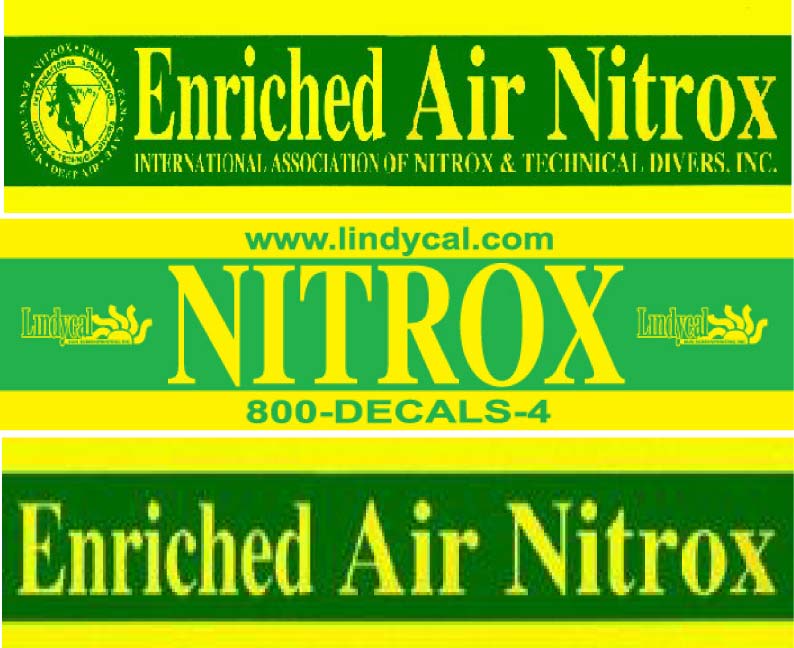Nitrox Beginners Guide
Nitrox diving is becoming increasingly popular in Scuba diving recently. So much so, that you can almost always spot one or two of those telltale green and yellow tanks that announce the presence of nitrox or oxygen-enriched air in dive boats across the world. Often confused for jargon related to technical diving, nitrox has actually been used in recreational diving for nearly over 25 years. For anyone unfamiliar with Nitrox and why you want to dive nitrox we’ve put together a practical guide to Nitrox diving for the everyday diver.

Çanakkale What is Nitrox and Enriched Air Nitrox (EAN)?
Nitrox simply means a mix of nitrogen and oxygen. In diving terminology however, enriched air nitrox (EAN) sometimes referred to as just Nitrox is a special nitrogen/oxygen gas mixture with an oxygen concentration higher than the 21 percent found in normal air.  While the gas mixture can come in a variety of ratios including less than the normal 21% oxygen, a mixture containing more than 21% oxygen is used in recreational and sport diving and is called hyperoxic nitrox. It’s also called SafeAir or Enriched Air Nitrox (EAN or EANx). The ‘x’ in EANx stands for the percentage of oxygen in the mix and is clearly marked with a nitrox tank band on the scuba tank and states the mix percentage, for eg. EAN40 (40% oxygen in the mix).
While the gas mixture can come in a variety of ratios including less than the normal 21% oxygen, a mixture containing more than 21% oxygen is used in recreational and sport diving and is called hyperoxic nitrox. It’s also called SafeAir or Enriched Air Nitrox (EAN or EANx). The ‘x’ in EANx stands for the percentage of oxygen in the mix and is clearly marked with a nitrox tank band on the scuba tank and states the mix percentage, for eg. EAN40 (40% oxygen in the mix).
purchase provigil generic There are two general types of diving nitrox: Nitrox I also called Nitrox 32, which is comprised of 32% oxygen and 68% nitrogen (EAN32); and Nitrox II, also called Nitrox 36, which is comprises of 36% oxygen and 64% nitrogen (EAN36). The 32 percent oxygen concentration is the most common in Nitrox diving.
How does Nitrox/EAN diving differ from diving with regular air?
As we all learn when we first start diving in the Open Water Certification, water pressure causes the nitrogen from the air you breathe to dissolve in your bloodstream. The longer and deeper a diver is underwater, the more nitrogen is absorbed by his system. As the nitrogen builds up, a diver can only be underwater for a limited time depending on depth as the pressure is more deeper and then must ascend slowly, make decompression stops consequent surface interval times before diving again.
As the nitrogen builds up, a diver can only be underwater for a limited time depending on depth as the pressure is more deeper and then must ascend slowly, make decompression stops consequent surface interval times before diving again.
The diving time allowed when using enriched air nitrox changes as the “enriched” air used has more oxygen and less nitrogen. This means, when diving nitrox a divers body absorbs less nitrogen during the dive than a diver that uses regular air. It’s important to note however, that although enriched air nitrox allows a longer no-decompression limit, it does not eliminate the risk of decompression sickness or nitrogen narcosis but simply lowers it.
Another common misconception about Nitrox is that it allows you to dive deeper, well this is not the case. According to the percentage of oxygen in a nitrox mix, the maximum operating depth becomes is shallower with the increase in oxygen. A Nitrox mix is good for mid deep dives ranging from 20-40 meters (60-130 feet).
Risks of Nitrox Diving
While Nitrox diving may increase bottom time for no decompression dives and lowers the risk of nitrogen narcosis it comes with it’s own concerns that air diving doesn’t have. For one, the increased levels of oxygen too can be narcotic and hazardous in high concentrations. It is called oxygen toxicity, which can lead to visual distortions or even convulsions. The major problem with oxygen toxicity is that you may get little or no warning of an attack making them harder to survive.
As nitrox contains a larger percentage of the highly flammable oxygen, the handling and cleaning of Nitrox tanks and valves must be done properly with care to avoid unintended explosions.
In short nitrox diving is not any less dangerous than air. Like conventional diving when done right with the proper training (special nitrox certification is a must) and when the guidelines are adhered there is no increased risk and it can be a safe activity to pursue.
Thanks to Leisure Pro Aqua News for the valuable information on Nitrox Scuba diving.
